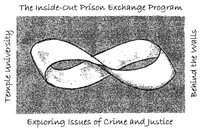 frontline’s the new asylums addresses the deinstitutionalization of state psychiatric hospitals and the reinstitutionalization of the mentally ill in prisons. wgbh compiled a handy interactive map of mental health care in state prison systems, complete with estimated prevalence rates and staffing levels and contact information for administrators in each state.
frontline’s the new asylums addresses the deinstitutionalization of state psychiatric hospitals and the reinstitutionalization of the mentally ill in prisons. wgbh compiled a handy interactive map of mental health care in state prison systems, complete with estimated prevalence rates and staffing levels and contact information for administrators in each state.
i can’t vouch for all the sources, but the bureau of Justice statistics and american correctional association estimates are likely the best available. i haven’t screened the video yet, but you can see clips online or order it for $30. i’d consider using it in my deviance class to show the interpenetration of social control systems, but it might also be useful in a social problems or punishment course.




